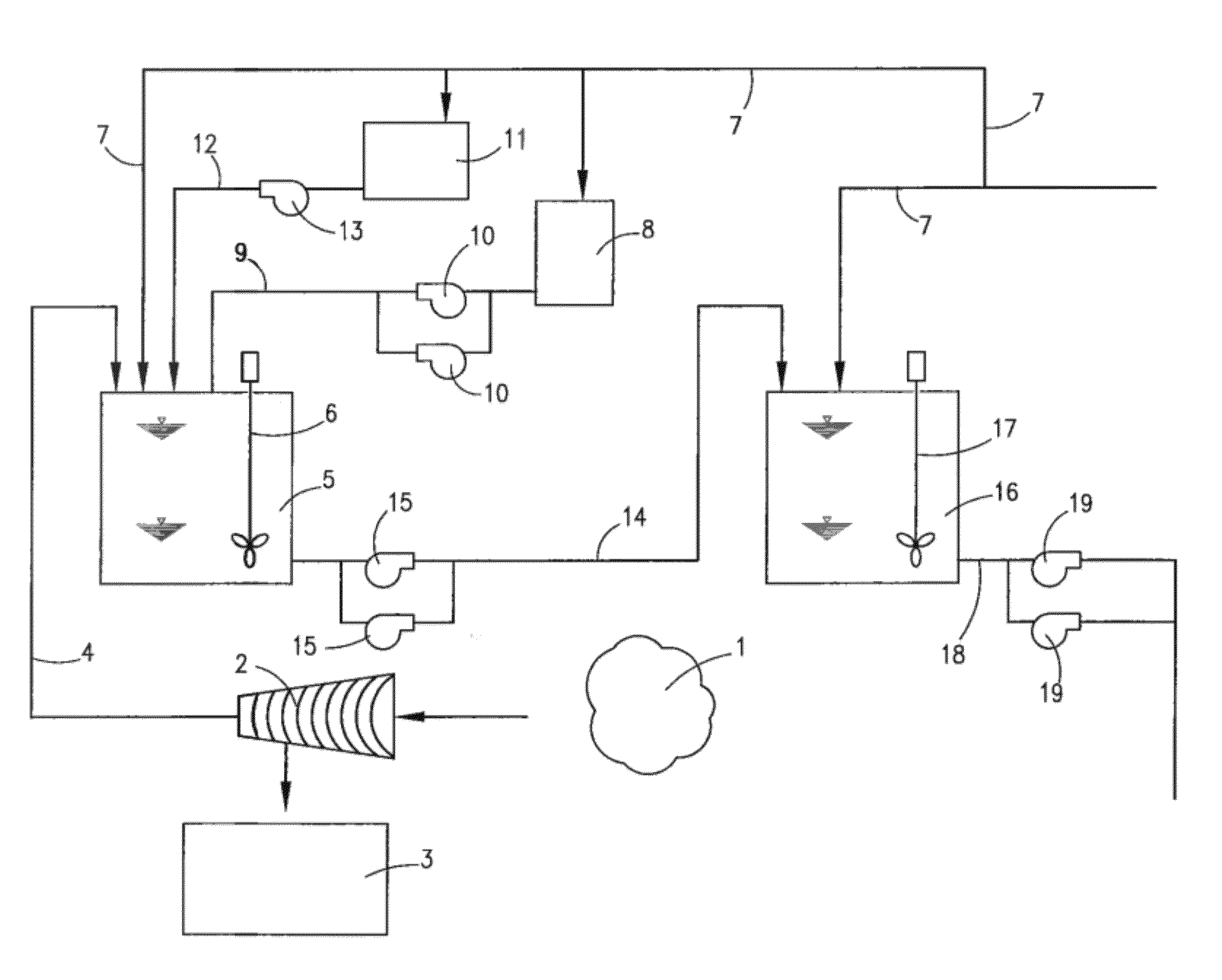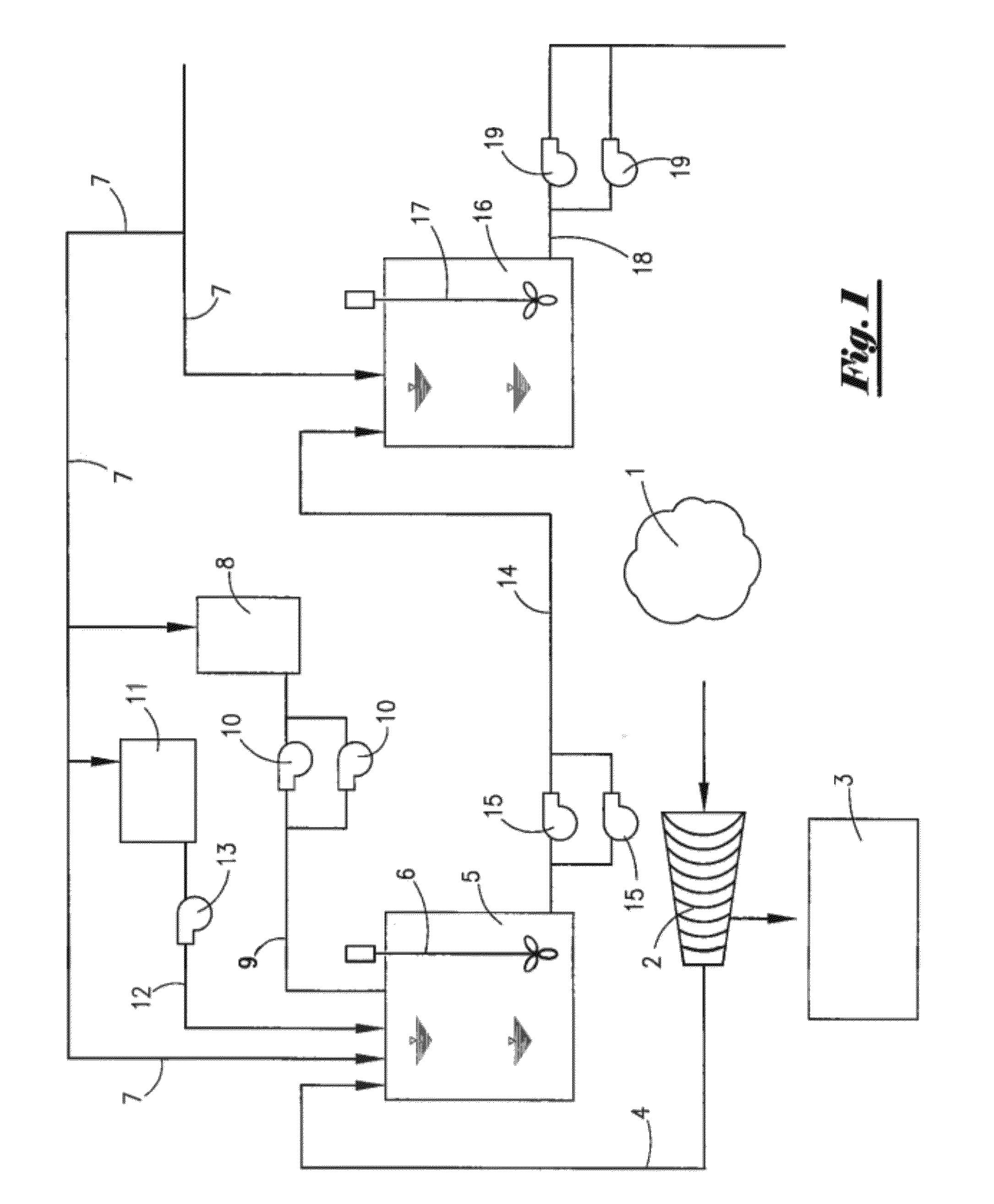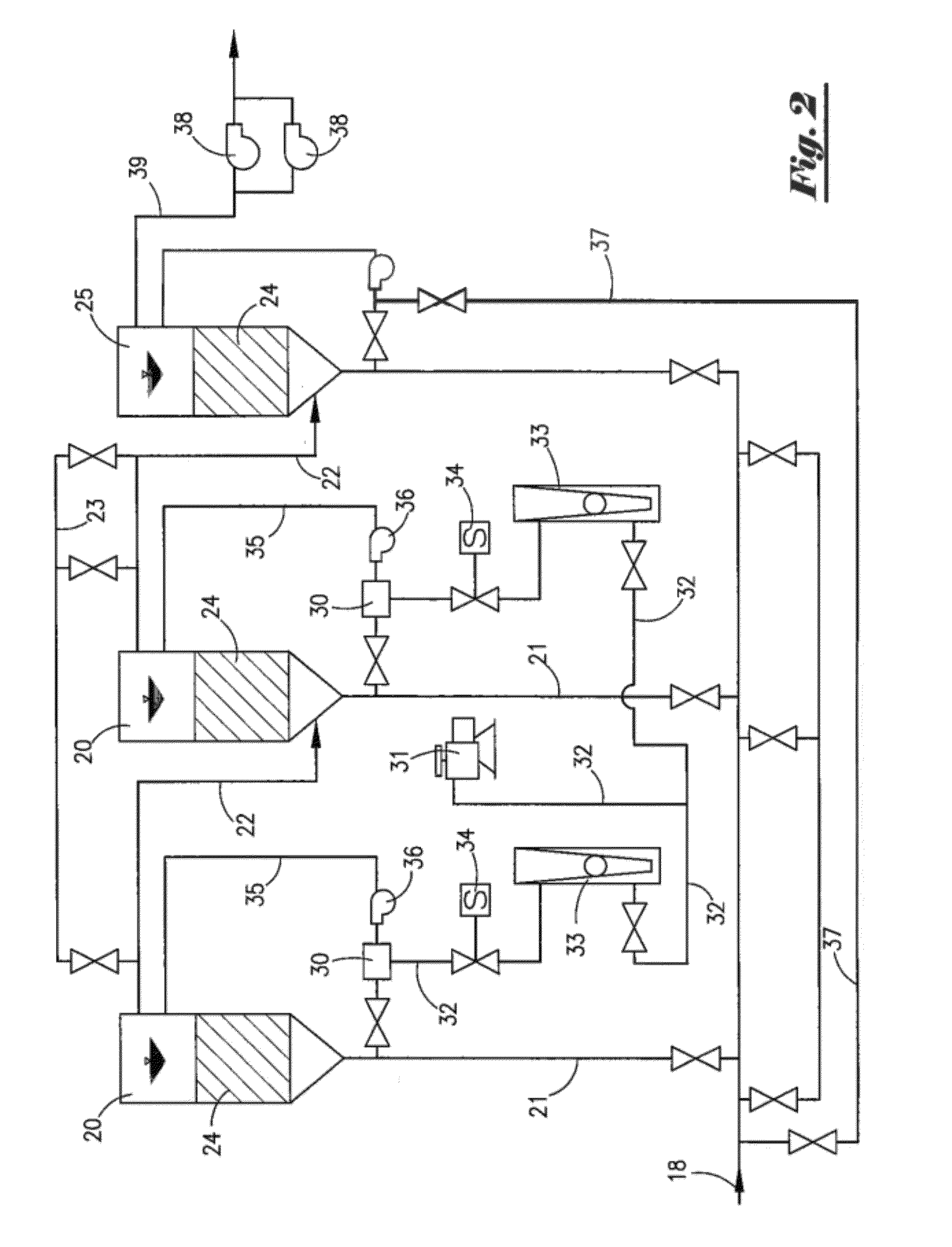Method and Apparatus for Continuous Flow Bio-Fuel Production
a technology of biofuel and continuous flow, applied in the direction of biofuels, biochemistry apparatus and processes, fermentation, etc., can solve the problems of inefficient and expensive existing processes for ethanol production, affecting the environment, and affecting so as to improve the growth and stability of microbial populations
- Summary
- Abstract
- Description
- Claims
- Application Information
AI Technical Summary
Benefits of technology
Problems solved by technology
Method used
Image
Examples
Embodiment Construction
[0041]Referring to the drawings, FIG. 1 depicts a pre-fermentation stage of the continuous flow production system of the present invention. Although many different feed stocks can be used in connection with the present invention, in the preferred embodiment, such feed stocks can include but are not limited to sugars from cellulose and other materials, sugarcane juice, sugarcane syrup, molasses, fruit juice and concentrates, purified sugars such as sucrose, glucose, fructose, maltose, and syrup mixtures containing simple sugars such as those found in drinks syrups.
[0042]In the preferred embodiment, feed stocks are tested for initial concentrations. Ranges between 15 and 30 degrees Brix (° Bx) can be directly introduced with nutrient amendment into the system. Higher concentrated feeds can be diluted to appropriate concentrations.
[0043]In the preferred embodiment, feed stock may include one or more solids. Accordingly, in the preferred embodiment raw feed stock 1 enters said pre-ferme...
PUM
| Property | Measurement | Unit |
|---|---|---|
| residence time | aaaaa | aaaaa |
| void volume | aaaaa | aaaaa |
| volume | aaaaa | aaaaa |
Abstract
Description
Claims
Application Information
 Login to View More
Login to View More - R&D
- Intellectual Property
- Life Sciences
- Materials
- Tech Scout
- Unparalleled Data Quality
- Higher Quality Content
- 60% Fewer Hallucinations
Browse by: Latest US Patents, China's latest patents, Technical Efficacy Thesaurus, Application Domain, Technology Topic, Popular Technical Reports.
© 2025 PatSnap. All rights reserved.Legal|Privacy policy|Modern Slavery Act Transparency Statement|Sitemap|About US| Contact US: help@patsnap.com



